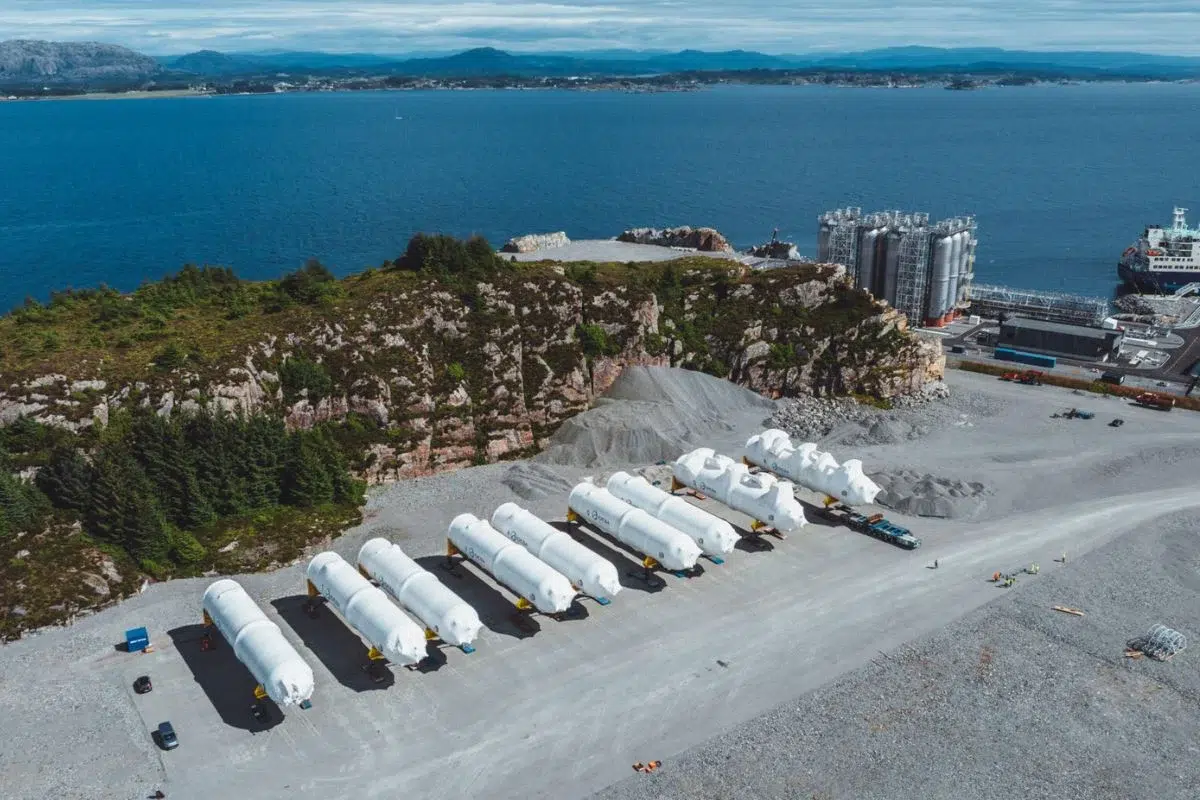Deep beneath the Norwegian seabed, an innovative industrial system transforms carbon dioxide emissions into a profitable storage solution. The Northern Lights project represents Europe’s first commercial-scale carbon capture and storage venture, utilizing a sophisticated 2,600-meter underground pipeline network. This groundbreaking infrastructure creates unprecedented opportunities for heavy industries seeking sustainable emission management while generating substantial revenue streams for Norway’s energy sector.
Revolutionary carbon transport and storage infrastructure
The Northern Lights initiative operates through an integrated logistical chain spanning from industrial facilities to deep geological formations. Carbon dioxide captured at the Heidelberg Materials cement plant in Brevik undergoes liquefaction before maritime transport to Øygarden terminal in Vestland county. From this strategic hub, a 100-kilometer submarine pipeline delivers the CO₂ directly to the Aurora reservoir, positioned 2,600 meters below the North Sea floor.
This sophisticated system marks the world’s first transnational carbon storage platform, accepting emissions from multiple European countries. Global warming consequences drive urgent demand for such innovative solutions across industrial sectors. The Norwegian infrastructure demonstrates how traditional energy expertise transforms into climate mitigation technology.
The geological storage site utilizes impermeable rock layers designed to contain carbon dioxide for millennia. Advanced injection wells ensure secure placement within stable underground formations, preventing atmospheric release. This technology addresses limitations of conventional energy sources by creating permanent carbon sequestration capabilities.
Strategic partnership driving European decarbonization
Three energy giants – Equinor, Shell, and TotalEnergies – formed this joint venture through a general partnership structure ensuring shared responsibility and investment. TotalEnergies contributes decades of North Sea operational expertise, particularly in deep drilling and offshore reservoir management. The French company positions carbon storage as essential for decarbonizing industries difficult to electrify, including cement and heavy chemicals manufacturing.
Unlike renewable energy alternatives, carbon capture addresses existing industrial processes without complete infrastructure overhaul. The partnership leverages combined technical capabilities across geological analysis, injection system design, and liquid CO₂ supply chain management. This collaborative approach enables rapid scaling beyond demonstration projects.
PartnerPrimary ContributionOperational RoleEquinorInfrastructure developmentLong-term site operationShellTransport logisticsMaritime coordinationTotalEnergiesReservoir expertiseInjection technology
Environmental benefits extend beyond carbon reduction, complementing solar energy applications in comprehensive climate strategies. Industrial clients pay for certified emission storage, creating sustainable business models around carbon management services.
Rapid market expansion and capacity growth
Phase 1 operations handle 1.5 million tonnes annually, with capacity completely reserved by industrial customers from launch. This immediate demand demonstrates market readiness for commercial carbon storage services. Starting 2026, Danish and Dutch emissions will join Norwegian volumes, establishing truly international operations.
March 2025 expansion plans increase capacity to 5 million tonnes yearly through significant infrastructure investments. The development includes :
Additional onshore storage tanks
Enhanced pumping systems
Expanded loading terminals
Supplementary injection wells
Specialized CO₂ transport vessels
European Union support through the Connecting Europe Facility provides 153 million dollars in funding, signaling political commitment to carbon storage technology. This financial backing accelerates deployment timelines while reducing private sector risks. Environmental protection measures ensure minimal impact on marine ecosystems, addressing concerns similar to coastal pollution challenges.
Industry projections estimate the global carbon capture market reaching 200 billion euros by 2035, with 18% annual growth rates. Norway positions itself as Europe’s geological carbon sink, leveraging unique submarine rock formations for competitive advantage.
Transforming CO₂ into profitable industrial commodity
Carbon storage industrialization transforms atmospheric pollutants into manageable commodities requiring specialized handling, transport, and storage services. Unlike conventional fossil fuel extraction, this process permanently removes carbon from atmospheric circulation while generating revenue streams. Educational initiatives, including environmental school programs, help communities understand carbon storage benefits.
The Norwegian model creates precedents for replicating similar infrastructure across suitable geological regions. Steel, chemical, and waste management industries represent potential expansion markets for carbon storage services. Proper waste handling protocols ensure safe CO₂ management throughout the storage process.
Current operations represent approximately 0.06% of European Union emissions, demonstrating scaling potential for meaningful climate impact. Success metrics include storage security, operational efficiency, and cost-effectiveness compared to alternative emission reduction strategies. Community engagement through environmental activities builds public support for expanding carbon storage infrastructure.
Norway’s geological advantages position the country as Europe’s primary carbon storage destination, potentially generating substantial export revenues from emission management services. This economic opportunity transforms climate obligations into profitable industrial ventures while advancing global decarbonization objectives.
